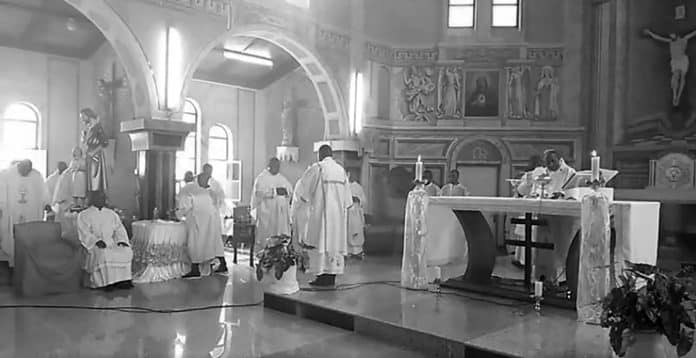Preserving History Through Design: The Remarkable Architecture of St. Theresa’s Metropolitan Cathedral in Tabora
Introduction to St. Theresa’s Metropolitan Cathedral in Tabora
Located in the heart of Tabora, a vibrant city in Tanzania, St. Theresa’s Metropolitan Cathedral stands as a testament to the rich history and remarkable architectural heritage of the region. This magnificent structure, dedicated to the patron saint of missionaries, St. Theresa of Lisieux, has become an iconic landmark that draws visitors from far and wide. With its grandeur and intricate design, the cathedral serves as a symbol of faith, culture, and the enduring legacy of the Catholic Church in Tabora.
Historical Significance of St. Theresa’s Metropolitan Cathedral
St. Theresa’s Metropolitan Cathedral in holds immense historical significance not only for the Catholic community but also for the entire city of Tabora. The construction of the cathedral began in the late 19th century during the German colonial era. It was a time when the Catholic Church played a vital role in shaping the social and cultural fabric of the region. The cathedral, completed in the early 20th century, stands as a testament to the resilience and dedication of the Catholic missionaries who brought their faith to this part of Africa.
Architectural Features of St. Theresa’s Metropolitan Cathedral
The architectural features of St. Theresa’s Metropolitan Cathedral in Tabora are truly awe-inspiring. The cathedral showcases a blend of different architectural styles, reflecting the influences of both European and African design elements. The exterior of the cathedral is adorned with intricate carvings and sculptures, depicting biblical scenes and local motifs. The soaring spires and majestic domes add a sense of grandeur to the structure, while the stained glass windows allow sunlight to filter through, creating a mesmerizing play of colors inside the cathedral.
The Design Philosophy behind St. Theresa’s Metropolitan Cathedral
The design philosophy behind St. Theresa’s Metropolitan Cathedral revolves around creating a sacred space that inspires reverence and awe. The architects sought to harmoniously blend Western architectural traditions with the local African context, resulting in a unique and captivating design. Every aspect of the cathedral, from the layout to the choice of materials, was carefully considered to create a space that not only serves as a place of worship but also celebrates the cultural heritage of the community.
Preservation Efforts for St. Theresa’s Metropolitan Cathedral
Preserving the architectural and historical significance of St. Theresa’s Metropolitan Cathedral is of utmost importance to the local community and the Catholic Church. Efforts have been made to restore and maintain the cathedral, ensuring that its beauty and cultural heritage are preserved for future generations. Skilled craftsmen and conservation experts work tirelessly to repair any damages, protect the delicate stained glass windows, and maintain the structural integrity of the building. These preservation efforts are essential to safeguard the legacy of St. Theresa’s Metropolitan Cathedral.
The Impact of St. Theresa’s Metropolitan Cathedral on the Local Community
St. Theresa’s Metropolitan Cathedral has a profound impact on the local community. Beyond its religious significance, the cathedral serves as a gathering place for people of all walks of life. It is a hub for social and cultural events, hosting concerts, art exhibitions, and community celebrations. The cathedral also plays a vital role in providing educational and healthcare services to the community, further cementing its position as a cornerstone of the city of Tabora.
Exploring the Interior of St. Theresa’s Metropolitan Cathedral
Stepping inside St. Theresa’s Metropolitan Cathedral is a truly awe-inspiring experience. The interior is adorned with intricate artwork, including beautifully painted murals, ornate altars, and meticulously crafted sculptures. The high vaulted ceilings create a sense of expansiveness, while the soft glow of the stained glass windows bathes the space in a warm and ethereal light. Exploring the cathedral allows visitors to appreciate the artistry and devotion that went into its creation.
The Role of St. Theresa’s Metropolitan Cathedral in Religious and Cultural Events
St. Theresa’s Metropolitan Cathedral plays a central role in religious and cultural events throughout the year. The cathedral hosts daily Masses and religious ceremonies, drawing worshippers from near and far. It also serves as a venue for weddings, baptisms, and funerals, marking significant milestones in the lives of the faithful. Additionally, the cathedral is a focal point for cultural celebrations, such as Easter and Christmas, bringing the community together to celebrate and honor their shared traditions.
Visiting St. Theresa’s Metropolitan Cathedral – Practical Information
For those planning to visit St. Theresa’s Metropolitan Cathedral, there are a few practical considerations to keep in mind. The cathedral is easily accessible from the city center and is open to visitors throughout the day. Modest attire is required, out of respect for the religious nature of the site. Visitors are encouraged to take their time exploring the interior and to soak in the atmosphere of this remarkable place. Guided tours are available for those who wish to delve deeper into the history and architecture of the cathedral.
The Enduring Legacy of St. Theresa’s Metropolitan Cathedral in Tabora
St. Theresa’s Metropolitan Cathedral stands as a testament to the enduring legacy of faith, culture, and architectural excellence in Tabora. Its remarkable design and historical significance make it a must-visit destination for locals and tourists alike. As efforts continue to preserve and protect this magnificent structure, the cathedral will undoubtedly continue to inspire and captivate generations to come. Whether one is seeking spiritual solace, cultural enrichment, or simply a sense of wonder, St. Theresa’s Metropolitan Cathedral in Tabora offers a truly unforgettable experience.
For more articles related to Infrastructure in Tanzania, click here!





























